Types of chanterelle and how to tell them apart
2 years ago · Updated 6 months ago
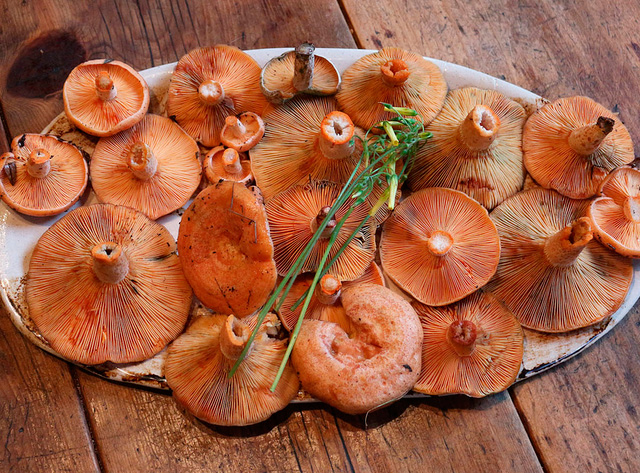
When chanterelle season begins, mushroom enthusiasts get excited just thinking about filling their baskets with specimens of Lactarius deliciosus, sanguifluus,...
If you consider yourself a mushroom hunter, it is important that you clearly understand the different species of chanterelles that can be found in the woods, so if you want to learn more about chanterelles and other edible mushrooms, we recommend one of our mushroom guides.
Want to buy delicious milk mushrooms? We recommend our section specializing in gourmet robellones
Main characteristics of níscalos
The níscalo, robellon, rebollon, . . . is not only the most abundant wild edible mushroom found in our forests, but it is also probably the healthiest from a nutritional point of view. If these two qualities were not enough, it is a mushroom that has an intense flavor that is not easily lost if not prepared properly (as is the case with other more delicate mushrooms), has an excellent texture, firm and whole, for cooking, and is extremely easy to identify in the field.
You may be interested in: Mushroom baskets
Edible chanterelle courses
With all these qualities, it is not surprising that it is the most popular mushroom in our region and that the tradition of eating it dates back to ancient times. The quintessential Mediterranean and pine forest mushroom, which always grows alongside conifers and only conifers, it was already popular in ancient Rome, as shown by some frescoes painted on the walls of the houses of pleasure in Pompeii and Herculaneum.
Lactarius deliciosus
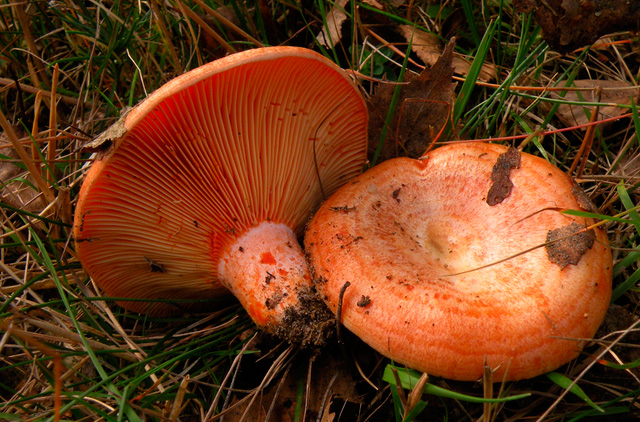
The scientific name of the delicious milk mushroom was given by Linnaeus as Agaricus deliciosus and was later changed by Fries to its current name Lactarius delicious: lactaro because it exudes milk from its cuts and gills, and deliciosus for its edibility and pleasant flavor.
However, this criterion is not always shared by all mushroom lovers, as some have often considered it a common mushroom of little value, both for its grainy texture and its supposed resinous taste. Personally, we find the chanterelle or robellón delicious and extraordinarily suitable for cooking in a thousand and one ways, especially to accompany meat dishes or strong stews.
The mushroom with a thousand names
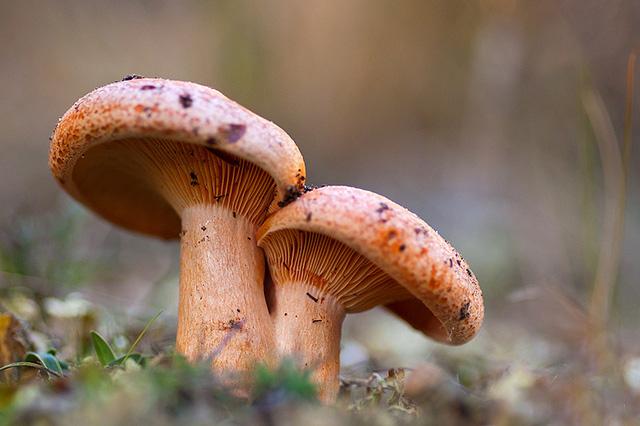
The lactarius deliciosus has many names, but on many occasions these names refer to species other than those included under the broad umbrella term “lactarius”.
The regions with the longest tradition of harvesting and consuming this mushroom are Catalonia and Castile. In the former, it has traditionally been known as “robello” because of its orange color. This name, in neighboring areas, has become ‘robellón’ and in other cases “rebollón,” in a clear corruption of the original word.
However, its name in Castile has been much less consistent. Although it has always varied around a similar onomatopoeia: “níscalo,” “nizcalo,” “nicalo,” “mizcalo,” and “micula.”
In the Basque Country, it became known later, when its oak forests were replaced by pine trees. It was also given the names “esnato,” “esnegorri,” “esne-perretxiko,” “xixa,” and “urriz-perretxiko” (perretxiko is generally a mushroom in Basque). The Galicians also discovered it later, although their names seem very old and taken from a treatise on witches: “pinga de ouro,” “fungo de muña,” and “fungo dos piñeiros,” for example.
In Jaén and Murcia, it is called “guiscano,” and in Valencia, “pinatell” or “pinetell,” and in Catalonia “esclatasang,” although in all these cases it is not the species that gives them their name, but rather Lactarius sanglifuus, Lactarius semisanglifuus, which appear more frequently in maritime pine forests and further south.
How to recognize chanterelles or Lactarius deliciosus
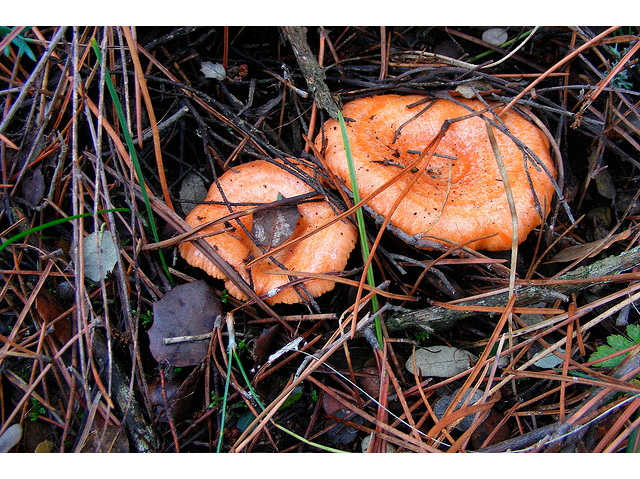
Its cap measures between 4 and 15 cm in diameter and is orange-red in color with darker concentric circles. It is initially flat with the edge curled downwards. It can then spread out and become depressed in the center.
Its gills are somewhat decurrent, thin, tightly packed, reddish-orange in color and sometimes stained with verdigris.
The stem is cylindrical, short, slightly attenuated at the base, initially solid then hollow, orange with hole-shaped spots (strobicules) that are slightly darker.
The flesh is hard, compact, slightly grainy, yellowish-white in the center of the cap and carrot-colored toward the periphery. Pleasant odor and slightly acrid flavor when raw. When cut, it secretes a carrot-colored latex, which turns greenish-gray on contact with air, a color that all broken or handled areas take on within a few hours.
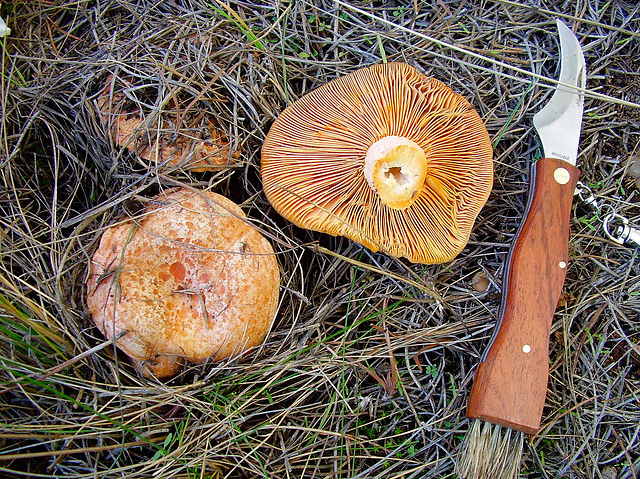
It is an excellent edible mushroom, especially the young specimens with the margin still rolled up. Fully developed, flat specimens are less interesting.
It appears associated with various types of pine trees but is especially abundant in young and reforested pine forests, with which it quickly associates. In mature pine forests with greater mycelial diversity, it is replaced by other mushrooms.
Lactarius sanguifluus
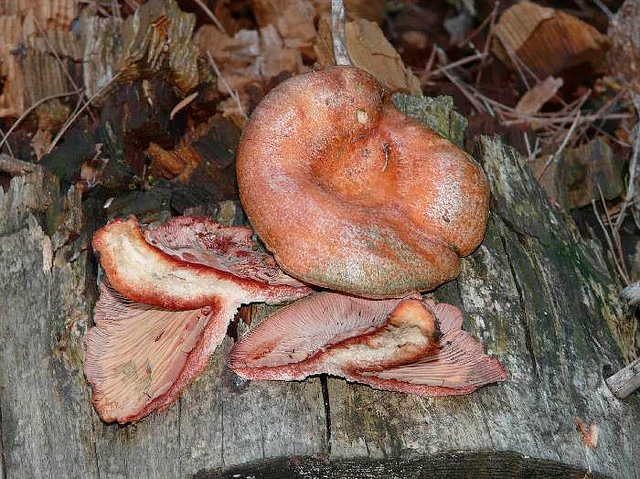
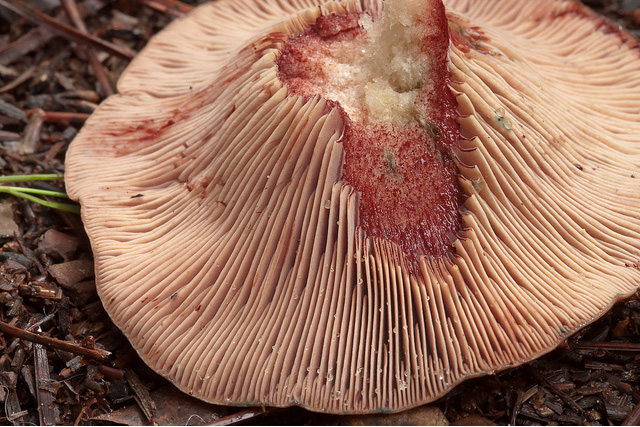
Its main difference from Lactarius deliciosus is that its flesh is wine-red and its color is purple. Its cap is more uniform in color. In addition, the zoned pattern is only noticeable on certain occasions. Its gills are more ochre-colored with a purplish tinge.
It is generally considered to be more edible than deliciosus and is easier to find in lower pine forests with a more Mediterranean climate.
Lactarius semisanguifluus
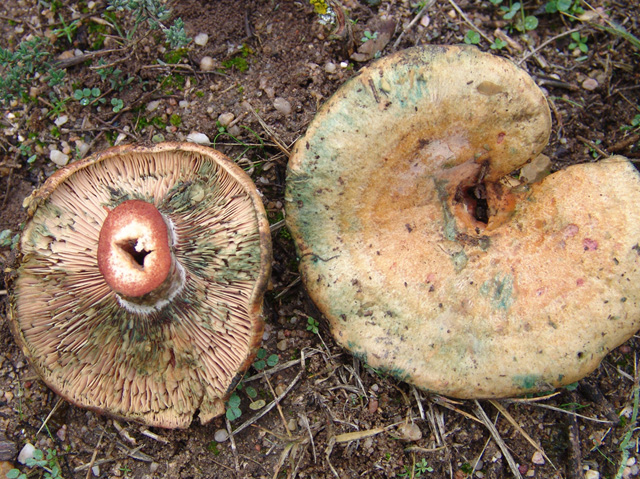
The semisanglifuus is slightly smaller than the deliciosus, initially convex then flattened and funnel-shaped. The color of the cap is similar but more greenish. Sometimes grayish green with clearly noticeable green spots. The gills are also similar but it has intercalated gills. The flesh is slightly darker. When broken, it turns from orange to blood red and finally to bluish green.
Parasitized milk cap
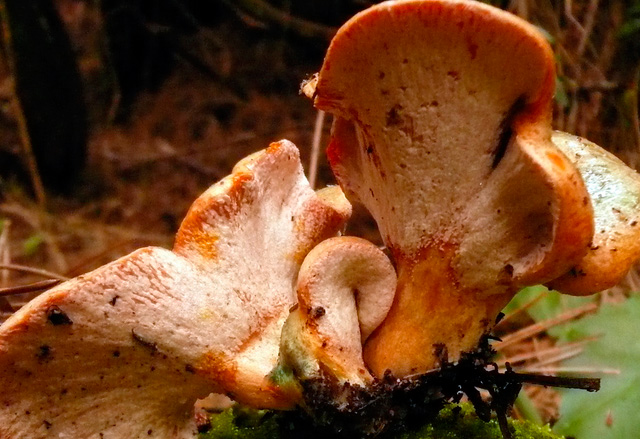
To the previous four types of milk caps, which we consider to be of superior gastronomic quality, we should add the milk cap parasitized by the fungus Peckiella lateritia. It is very easy to identify. Its cap retains its color but not its shape, and is disproportionate, semi-amorphous, and irregular. Its gills have generally disappeared completely, replaced by a white cloud-like veil, which is the parasitic fungus.
It is very unattractive in appearance, but has the same quality as the delicious variety, if not better.
Other lesser quality milk caps
To the five milk caps we have discussed so far, we must add another group. These are milk caps with a slightly lower gastronomic rating but also harvested in abundance. These are L. hemycianeus, L. salmonicolor and L. quieticolor.
Lactarius hemycianeus has a cap that is clearly gray with orange tones. This means that it can be confused with L. quieticolor. The gills are much more orange than the cap, and the stem is covered with a grayish-white color. If rubbed with a fingernail, the orange color of the flesh is revealed.
The flesh is also very different from that of deliciosus. In this case, it is bluish-green under the cuticle and the upper part of the cap. The flesh of the stem is orange on the outside and white on the inside. It is of lower quality than deliciosus and is quite common in northern pine forests.
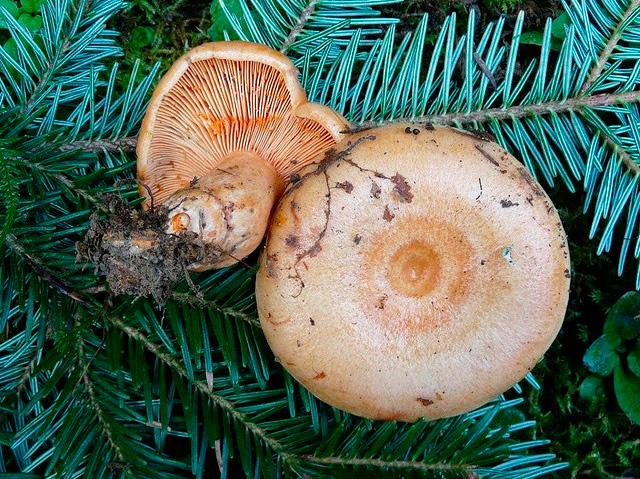
The L. salmonicolor is more characteristic of fir forests in the Pyrenees. It can be easily distinguished from the deliciosus because its cap is more yellowish, lighter, and brighter in color.
But above all because its flesh does not change color quickly, taking on greenish tones. It remains unchanged for hours before darkening.
Its latex, on the other hand, is bright orange, similar in color to saffron.
The third of the lower quality lactarius mushrooms is the L. quieticolor. Its cap is darker, similar to that of the hemycianeus. Its flesh is yellowish when cut and quickly turns orange due to the influx of latex of this color. It is also common in the north.
False Lactarius mushrooms
Another Lactarius that looks similar to the milk cap is L. torminosus, which is always associated with birch trees. At first glance, it also looks very similar to milk caps.
It owes its color to its cap and zoning, but its rings are perfectly concentric. In addition, the color is not orange but brick red.
Its cuticle is woolly or velvety, a characteristic that is very noticeable on the edges.
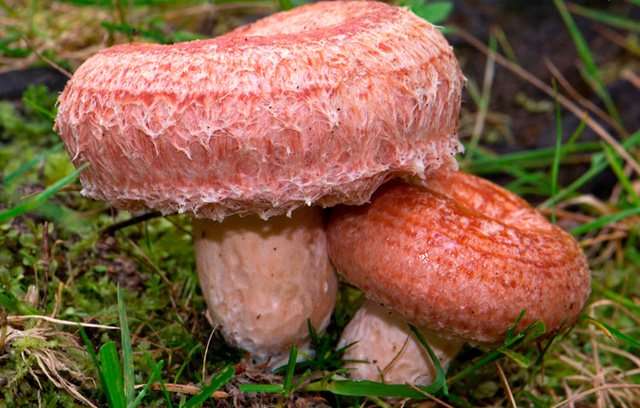
This birch milk cap is considered poisonous, but in Russia it is harvested in large quantities. It is then preserved in brine and eaten throughout the year.
In this country, there are huge expanses of birch trees where this mushroom grows in abundance. This species of milk cap mushroom has traditionally been used for consumption in winter.
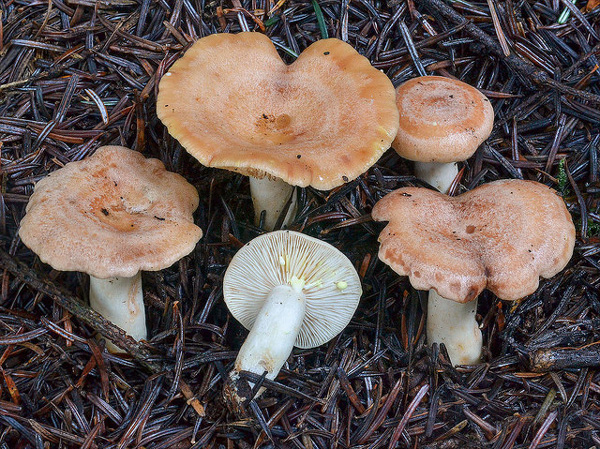
Another milk cap that looks similar to L. deliciosus is L. chrysorreus. Also known as goat's milk cap, characteristic of holm oaks. It has white latex that quickly turns yellow, abundant and very pungent. It is not edible due to its acrid taste.
Equipment needed to harvest delicious milk caps
Now that you know the main characteristics of delicious milk caps, it's time to go looking for them! To ensure you are properly equipped, we have prepared a selection of essential mycological equipment.
Among the essential equipment you need to take with you, don't forget a slicing knife, which, thanks to its curved shape and strength, will make picking milk mushrooms easier.
However, if you are one of those who like to clean chanterelles to remove any remaining soil or vegetation, we recommend knives with a brush, a very sensible option.
It is also essential that you have a mushroom basket to store all the mushrooms you collect. When choosing one, you should take into account certain aspects such as the shape, height, and weight it can hold.

Te pueden interesar